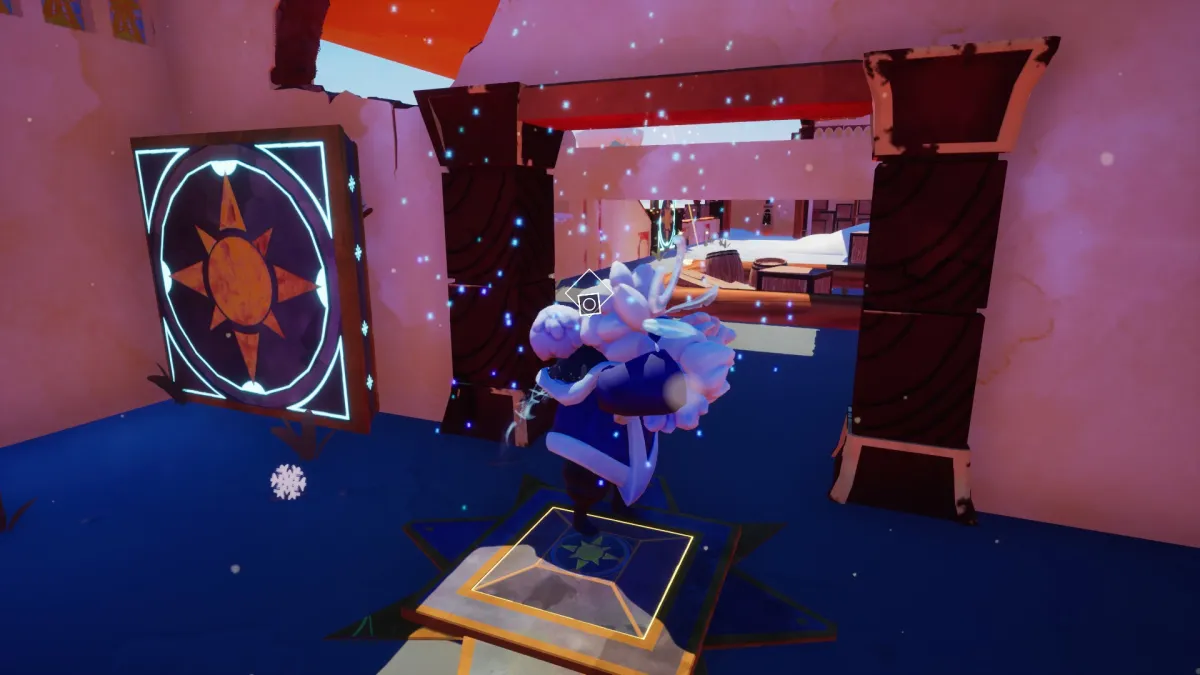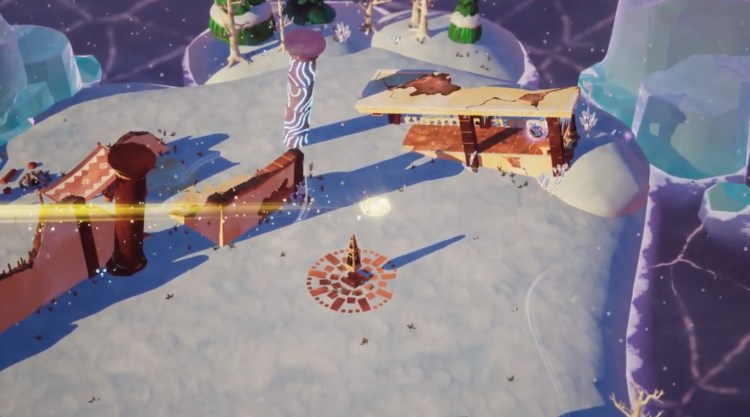Puzzle games are my preferred method of mindful assault nowadays, as I sit here craving some mental stimulation. And what better way to lose your mind is there, especially while bringing friends and loved ones with you? Throughout my coverage of Zorya: The Celestial Sisters, I made it perfectly clear that the benchmark of any good puzzle game is the potential for you to make your partner go crazy. But crazy in a positive, fun way. I can confirm that Zorya mostly succeeds with this task, as I can recall dozens of times where my partner and I snapped at each other like turtles for making a misstep or a bad call in a way that was completely our fault. But there isn’t a thing as a perfect puzzle game, even if something like It Takes Two gets close.
Throughout my adventure of Zorya: The Celestial Sisters, there was always one issue that stuck in the back of my mind. As I traversed the icy grounds as Aysu, the goddess of the night, I looked up to my partner up in the sky. He controlled Solveig, the goddess of the sun. There’s a key difference between the two perspectives — one that shifted my perspective about this game considerably. Balance. Zorya’s main “gimmick” (every puzzle game has one) is the two completely different point of views each player has while playing the game. This leads to some fascinating moments, but I felt like at times, the responsibility leaned too much on one player.
Whoever plays as Aysu will experience the game in a close-up, third-person perspective, doing most of the grunt work like pushing boxes or shoving enemies out of the way. Meanwhile, whoever plays as Solveig commands their actions from the skies. Solveig players will experience the game from a top-down perspective. Their job is mainly to move shadows to create paths along with the sunlight, as Aysu must stay in the dark.
Dueling responsibility
Perhaps it was just how my partner and I played the game, but there was a slight power imbalance in our playthroughs. As you may have guessed, the goddess who ascended to the clouds had more fun watching from above, as she possessed most of the authority. There’s no real way to solve this with how the format of the game is designed, but it felt like Solveig did most of the intensive stuff mechanically.
This speaks true especially in the early game, as many puzzles are solved with Solveig rather than Aysu. It was also our opinion that Solveig was generally more interesting to play. Aysu, for a large portion of the game, is limited to pushing boxes and stepping on switches. She can shove enemies out of the way, but the enemies in this game typically aren’t too interesting.
It doesn’t stay like this forever, and the game makes it easy enough to swap between the two characters. But we felt there was a natural advantage for Solveig strategically. In my preview of the game, I already felt hints that Solveig had the advantage in solving the puzzles. My partner and I felt similarly in the full game: Solveig does much more solving than Aysu. There is a level of fun for Aysu, though. Following the commands of Solveig and coordinating the shadow walking is entertaining. Zorya also makes a point to add more gameplay options to the game periodically, like the ability to melt huge walls of ice.
These new abilities aren’t too groundbreaking, and the game generally devolves somewhat into repetition. It’s pretty important to regularly switch characters with your partner, although this is something that may be difficult if you’re playing online with strangers. Luckily, the game has some degree of replayability, as full completion requires you to beat each level with both characters and the unlocking of a secret collectible.
Playing with friends
Speaking of online play, Zorya goes to great lengths to make the co-op process as seamless as possible. For those with crippling anxiety without the safety cushion of a reliable ally, Zorya provides plenty of tools to find a partner regardless. The game features cross-play for both the PC and Switch, with online matchmaking as well. We even tinkered with the game’s ping system, which worked pretty well. (Although like with many of her mechanics, pings felt quite limited for Aysu.) The game also supports a split-screen, though we didn’t get to test the feature. (I imagine a big part of the fun is the dramatically different perspectives, however, so I’d advise against split-screen to preserve the experience a bit more.) Level progress seems to rely on the host, so you don’t need to rely on the same partner either.
The level designs are mostly good, striking a respectable length for each challenge. The snowy design of many of the levels can sometimes grow weary, but the art direction is overall satisfying. Secret collectibles are placed in each level, and many of them are actually challenging and rewarding to find. It’ll require a good amount of thinking, as hills or platforms can always lead you to an unexpected location. The game leans on the easier to intermediate side, (at least to my partner and me), so the collectibles added some difficulty that was greatly appreciated.
That’s not to say the game lacks challenge. The puzzles gradually become more elaborate, and there were a few times when my partner and I were genuinely stumped. And that’s what’s really important, isn’t it?
A puzzling verdict
Overall, Zorya: The Celestial Sisters is enjoyable, although the format is a tricky situation as it both elevates and hinders the experience. It’s a mild adventure, and something that’s worth playing if you and your friends need to scratch that co-op itch. Perhaps more care could have been taken to give both players a more level playing field, but that was always going to be a tough hurdle. We certainly didn’t regret this experience, regardless.











Published: Feb 8, 2022 12:15 pm